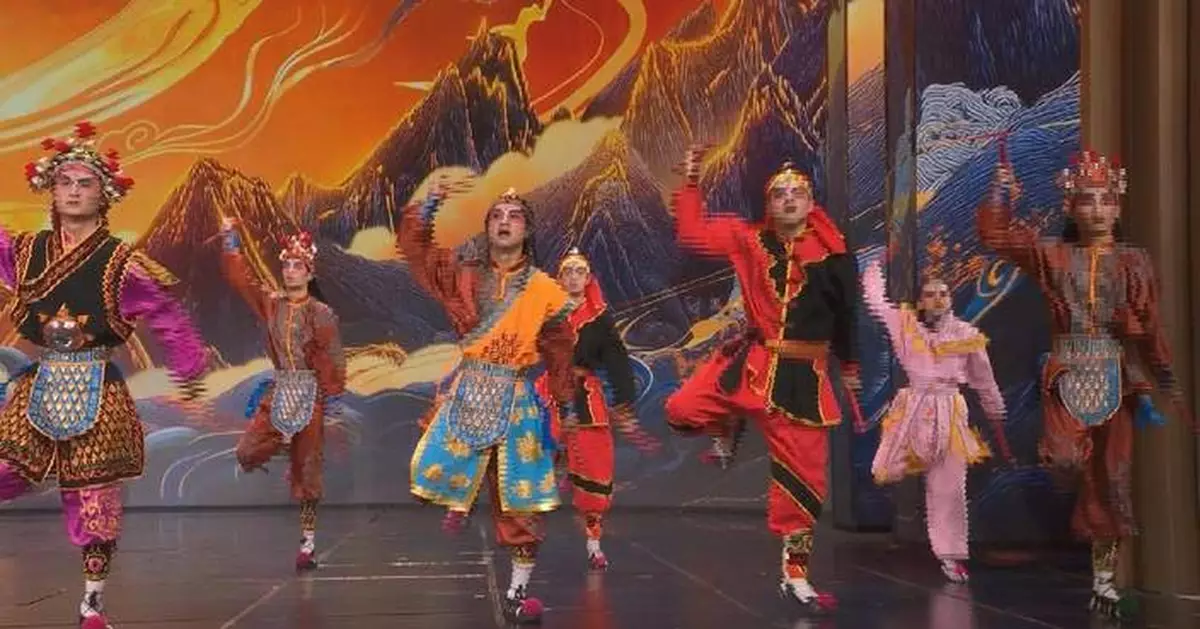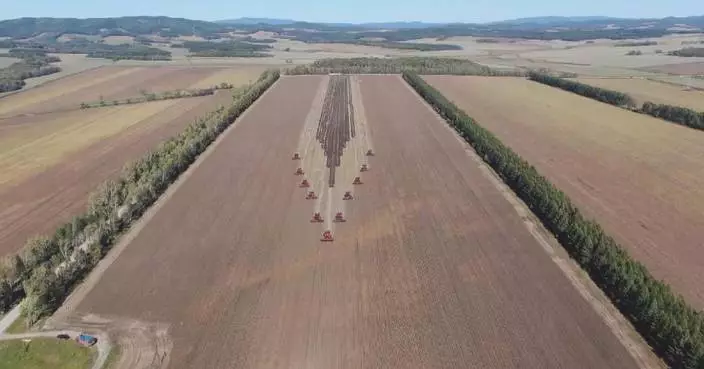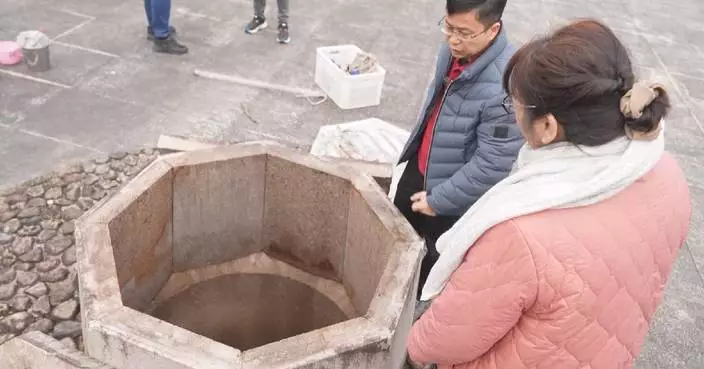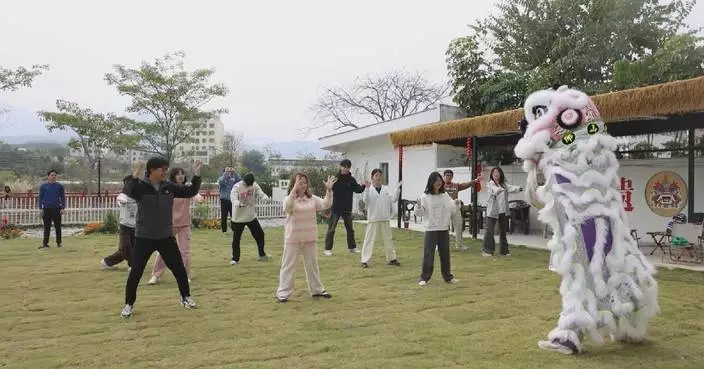Dance team coach, choreographer and members shared how they had striven to bring a much-celebrated intangible cultural heritage -- Yingge dance to the stage of the 2025 Spring Festival Gala, a grand celebration presented by China Media Group (CMG) on Tuesday.
The Yingge dance is a form of folk dance popular in south China's Guangdong Province that merges opera, dance, and martial arts.
During the performance in the Spring Festival gala, dancers from Puning Nanshan Yingge Dance Team and Puning Fumei Youth Yingge Dance Team from Jieyang, Guangdong, presented a stunning display of the traditional Chinese folk culture.
In an interview with CMG, the team coaches and choreographers said that the biggest challenge was to preserve the Yingge dance tradition while making audience see the folk dance's beauty and dancers' passion. Therefore, they reconstructed the Yingge dance movements and formations.
"We used to dance with the music of gongs and drums. This time we combined it with pop music. At first, no one got used to it. Then choreographers re-arranged the choreography for us. In this version, we can show our strength, and match dance steps with music beats. It also includes elements of the intangible cultural heritage -- ensuring our original and authentic ingredients were there," said Li Junhao, coach of Puning Fumei Youth Yingge Dance Team. "In fact, all sides have overcome the difficulties they face, in order to achieve one goal, which is to bring traditional culture to the stage and at the same time protect our traditional culture," said Lu Shuaining, dance director of 2025 Spring Festival Gala.
In order to present the perfect performance to audience, dancers from the two teams trained in Beijing for more than a month.
Until just before the performance, the dance moves were still being adjusted and the music was being improved in order to elevate the show to perfection.
"Every night when we went back (to the hotel), we had to take an exam. Everyone had to do the movements twice. We had to do the program we were preparing for the Spring Festival Gala twice in a row. Only if you successfully did it twice in a row, it would be considered presentable. Even if you paused just for a little while, it would not work," said Chen Hengren, a member of Puning Nanshan Yingge Dance Team.
"The most memorable thing for me was the first version we prepared when we came for the rehearsal. We couldn’t match dance steps with music beats. We wanted to show the best of ourselves. So one day when we went back to the hotel, as we couldn’t find a venue, all the team members, including those from the Nanshan team, trained outdoors for two hours in freezing cold. We were very hardworking. This is the spirit of Yingge dance," said Li.
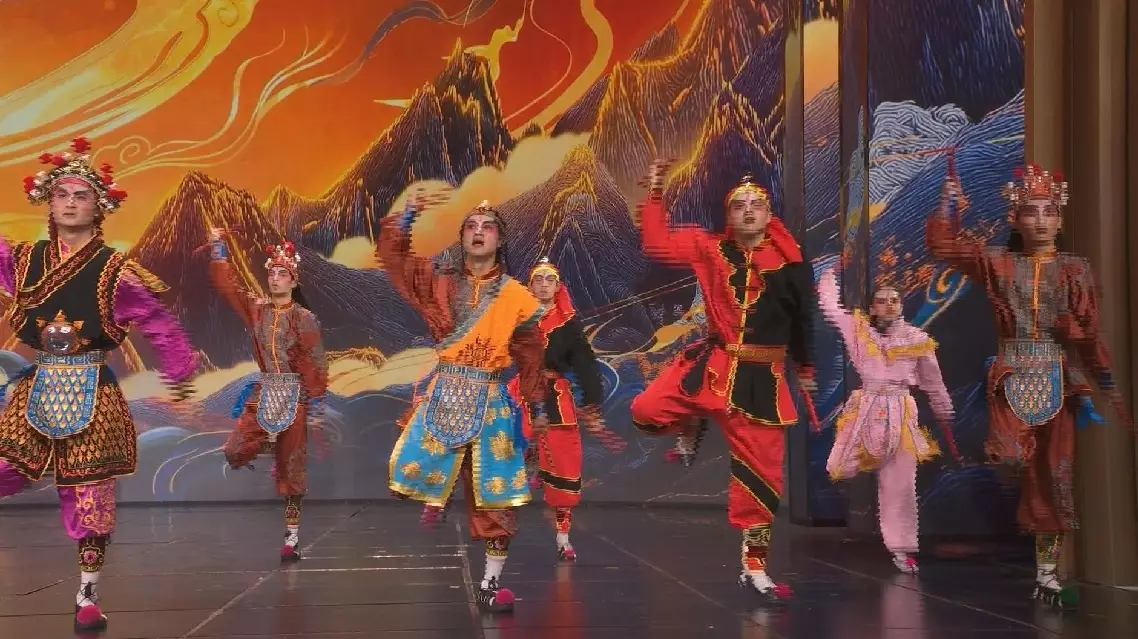
Behind-the-scene stories of Yingge dance in Spring Festival Gala
China's ice and snow tourism has experienced booming growth during the 40-day Spring Festival travel rush which just concluded on Saturday.
Data from Tongcheng Travel, an online travel service provider, shows that hotel bookings surged by over 40 percent year on year in many popular winter tourism destinations in northern China, including Altay and Yili in northwest China's Xinjiang, Qitaihe in northeast China's Heilongjiang and Xilingol League in north China's Inner Mongolia.
The ice and snow fervor fueled by the Asian Winter Games, which were held in the "Ice City" of Harbin from February 7 to 14, has spurred economic growth and boosted tourism in the city and surrounding areas. As a result, domestic flight bookings for Harbin increased by over 20 percent year on year. Hotel bookings in the city rose by about 60 percent compared to the same period last year. Meanwhile, the total number of inbound tourists has seen a year-on-year increase of over 144 percent.
In addition to the northern regions which are traditionally winter tourist destinations, many places in the south are also seeing growing popularity for winter activities. The search volumes of ice and snow-related consumption more than doubled in places like Shanghai, Zhejiang and Guangdong, according to data from Tongcheng Travel.
"The number of tourists had increased about 30 percent during the Spring Festival, compared to the same period last year," said Zhou Daochun, an employee of a ski resort in Zhejiang Province.
China's railway system had taken measures to deal with the ice and snow travel boom during this year’s Spring Festival travel rush with additional trains being operated between popular winter tourism destinations.
Meanwhile, local railway systems also cooperated with transportation authorities to open special trains that could carry tourists to experience winter sports and events, achieving seamless transfer among railway stations, bus stops and ski resorts.
In response to the surge in tourists heading to have fun with ice and snow in Shangri-La of southwest China's Yunnan province, local railway authorities operated special tourist trains that stopped in popular cities within the province, including Xishuangbanna, Kunming, and Dali. The trains then continued to Lijiang, where tourists could board a high-speed train that would take them directly to Shangri-La.
Xiamen in east China's Fujian opened an ice and snow-themed train to Harbin for the first time. The local railway station also launched tailored services for certain tourists to ensure their safe and smooth travel.
"We set up a designated area for tourist groups in the railway station's waiting area and assigned special personnel to help senior tourists, providing warm and secure services to ensure their comfort and safety," said Wu Zhenbin, staff working at the Xiamen North Railway Station.
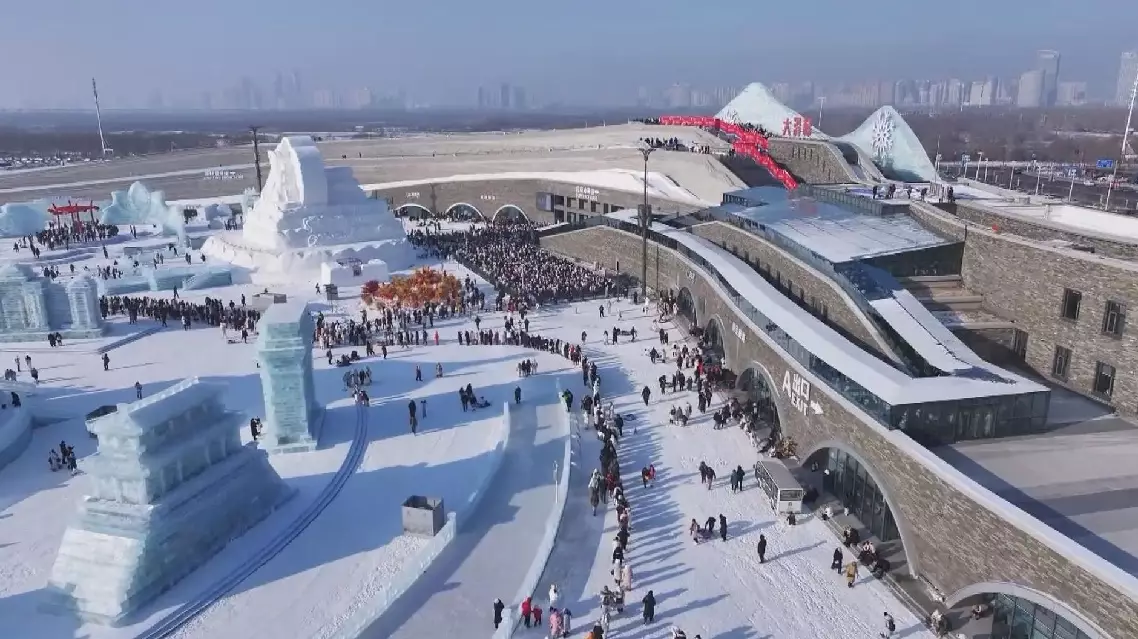
China sees booming winter tourism during Spring Festival travel rush



